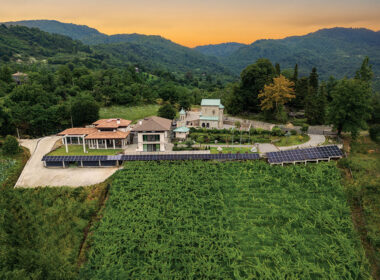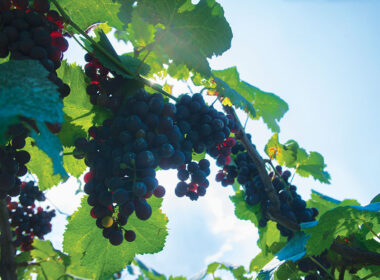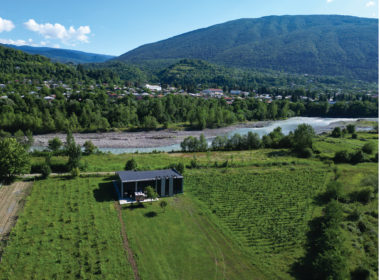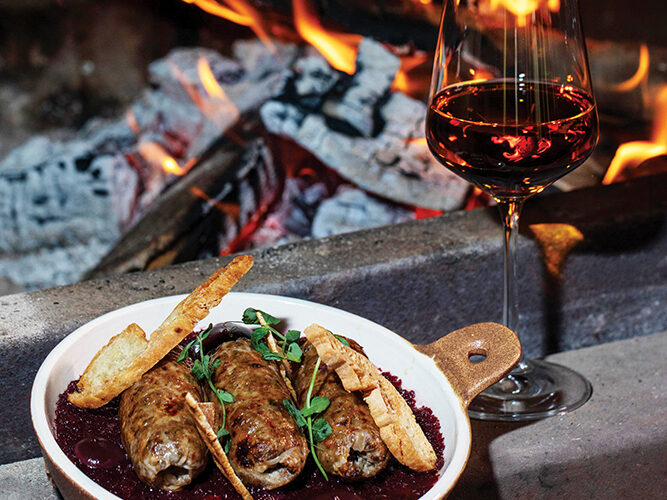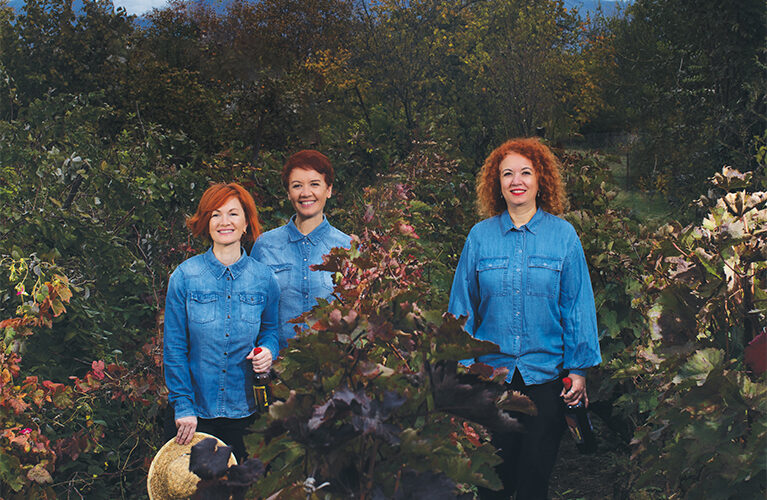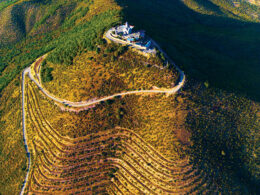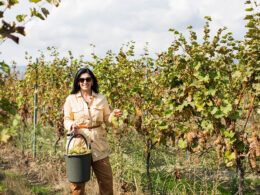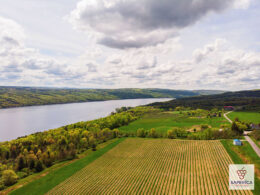/ FOOD & WINE / By Tazo Tamazashvili | Best Sommelier of Georgia 2018 /
Kartli is our country’s oldest viticulture and winemaking region, where centuries ago cultural vine established itself, hence the tradition of winemaking was born. Us and our foreign colleagues have been discussing this historic region a lot in recent years. For example, in Vogue magazine, Nicole Kliest refers to Kartli as one of the oldest and at the same time forgotten regions of the world. She also mentions Italy’s Puglia and Spain’s Sherry. Etc. The geopolitical situation in past centuries has created problems for several of our country’s regions, among them is upper Kartli’s Meskheti, where, as a result of long-term occupation, the ancient culture of viticulture and winemaking had been lost, and maranies disappeared as well.
In recent years we have been noticing some positive movements in this region.
A few small wineries and maranies have entered the playing field with interesting wines produced from the endemic grape varieties of the region. There is a growing interest towards these wines, and it is obvious that they have big potential to enter the internal market and be fittingly represented on the world’s wine shelf, as well.
Recently we conducted a survey in some leading wine shops and bars in Georgia, the results showed that, after Kakheti and Imereti, the third most popular wines originate from Kartli. The reason for such popularity is that these wines can be consumed through any season, and they are notable with the vibrancy of their style.
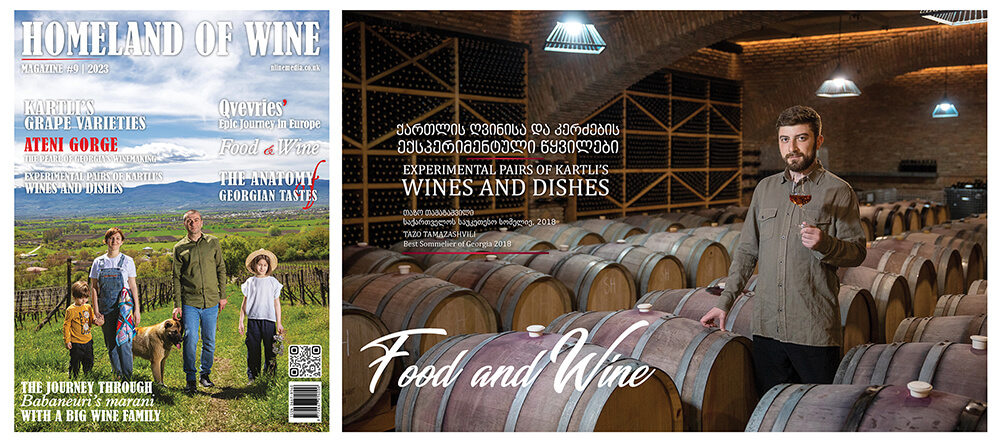
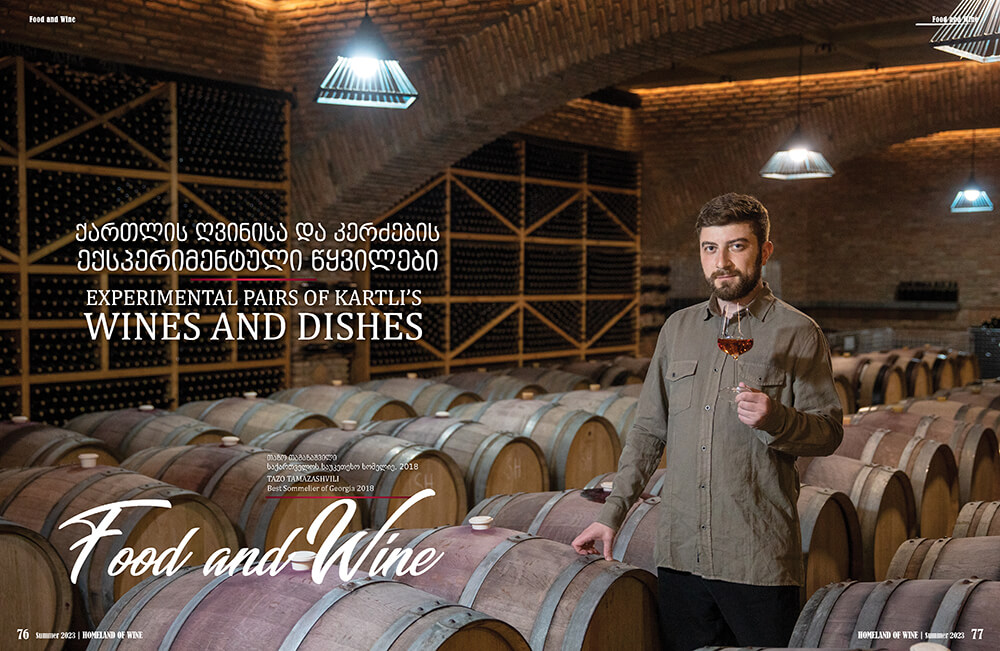
Kartli has always been famous for having an abundance of grape varieties. Amongst the leading varieties, white grapes Chinuri and Goruli Mtsvane are the most notable. From the red – Shavkapito and Tavkveri. Both, recent and past tendencies have shown that the region’s climate and soil characteristics are diverse to such an extent that aside from local, endemic varieties, even foreign varieties can properly show their true potential here. Even at the beginning of the last century, French, white grape variety, Aligoté, as well as red grape variety, Pinot Noir, were very popular in Kartli. This claim can be supported by the fact that it is legally permissible to use Aligoté for making the region’s PDO wine Atenuri. (Atenuri can only be made from the grape varieties Chinuri and/or Goruli Mtsvane and/or Aligoté, only yielded in Ateni micro zone, using any other varieties is prohibited.) Atenuri can be either a sparkling, or white wine. It is best to make sparkling using a traditional method, with secondary fermentation inside the bottle, to achieve the best result. In the same region, we can find foreign varieties such as Chardonnay and Cabernet Sauvignon as well.
Varietal diversity and big possibilities for the region
The diversity of Kartli wines can be further emphasised by the fact that they do not have seasonality. Here, for example, we can find light wines produced from Kartli’s white grape varieties planted in Ateni gorge or on Mukhrani fields, as well as- full body, good gastronomic wines made from Shavkapito or from Budeshuri Saperavi, along with Saperavi planted in kartli. It is encouraging to see the developmental tendency of other red grape varieties in this region in recent years. Among them, Buza and Danakharuli, wines produced from these varieties have become very exceptional and valuable to me. Winemakers work well with these varieties, and I have bigger expectations as well, since both of them truly have huge potential.
In Kartli, there are several, notable terroirs. among them is Ateni gorge where vineyards are planted on slopes and a rocky terrain. For me, the most favourable is Chinuri, yielded in this gorge, which if vinified in a classic way turns out to be a delicate, light, summer wine, characterised with citrusy, mineral undertones. I would also single out Mukhrani’s Goruli Mtsvane, Shavkapito of Bolnisi, Meskhuri Mtsvane and Tskhenisdzudzu, since these are the varieties which reveal enormous possibilities for Kartli wines to present themselves in an excellent light on the world’s wine shelf.
Pairing Kartli’s Wines and Dishes
The wines of this region can be ideally paired with local, Georgia’s other regions’, and international cuisines, which again is due to the fact that Georgian wines are stylistically very diverse. Here, we can find many noteworthy examples of sparkling, white classic (yielded form Chinuri and Goruli Mtsvane,) as well as light body and high intensity red wines, produced from foreign varieties. Kartli’s gastronomy is very vibrant as well, however, the traditional recipes of this region are not that widespread in our country’s restaurant sector. For this reason, my friends and I have decided to conduct research and introduce to our customers and foreign colleagues the full diversity of the region’s gastronomy and wine. Before that, however, I would like to offer some interesting pairing ideas to you.
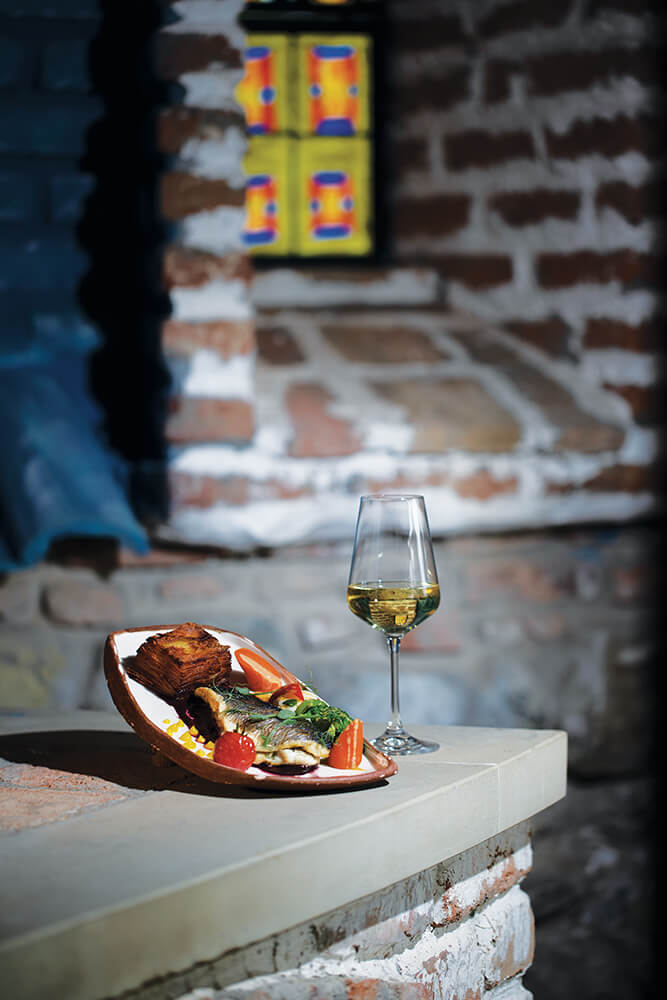
Seabass Served with Vegetable Sauce and Potato Chips & Classic Chinuri from Ateni Gorge.
Seabass is a light, neutral tasting fish, its white meat can easily adopt the taste of a variety of different sauces which feature heavy citrus and fresh vegetable flavouring. I’d like to offer you my favourite pairing with this dish- it is a classic Chinuri from Ateni gorge, in which the wine’s structure and balance are well expressed.
The Chinuri is produced by Vila Mosavali and this wine’s citrusy and mineral expression goes well with the Seabass- the saltiness of the fish effortlessly blends with the wine’s zesty acidity, thus resulting in a balanced taste, hence neither the wine nor the dish gets lost. The aftertaste of Chinuri lingers awhile, and together with vegetable sauce enables us to feel the tertiary taste.
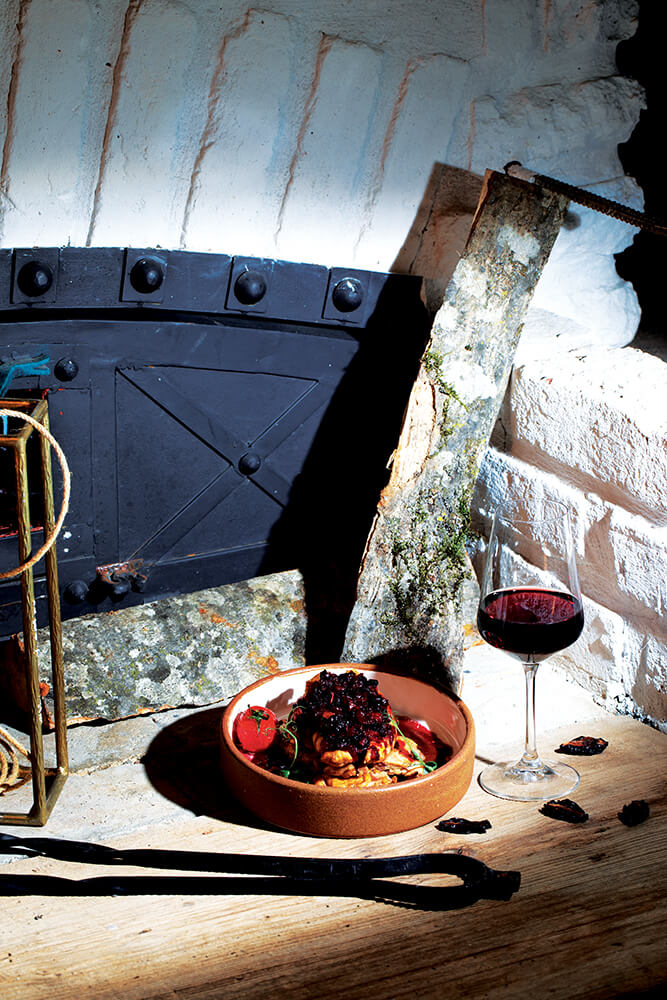
Poussin in Raisin and Pomegranate Sauce & Shavkapito
In the sauce of this dish, there is pomegranate together with various types of dried fruit, which we could pair with white or amber wine, as we are dealing with very rich flavours and spiciness, therefore I have chosen Kartli’s Shavkapito. This wine stands out with its elegance and finesse, has a balanced taste, and an ideal complexity of body and tannin. The flavour of the sauce goes well with that of the wine’s- the tones of pomegranate, black plum, and spices, ideally balance each other out.
I wouldn’t say that such wine should necessarily be paired with red meat dishes, on the contrary, it is rather exciting, and the best for expression of taste, when we deviate from the norm. For instance, we could replace a conventionally accepted poultry and white wine pairing with a more elegant one, as I suggested in the case of baked poussin and Shavkapito.
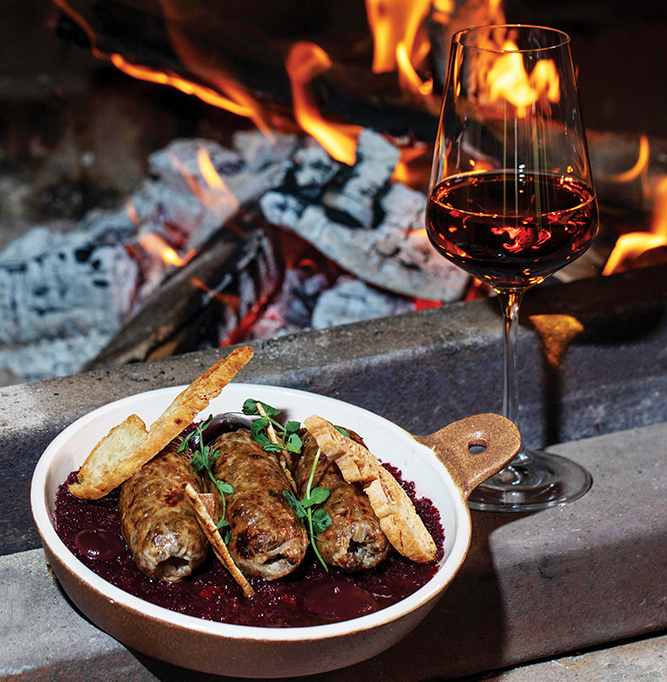
Apkhazura with Beetroot Sauce and Ajika & Goruli Mtsvane
Wrapped in caul fat, minced beef with spices and barberry is baked on a barbecue grill. Smoky flavours are well detectable, which is topped with the taste of a mildly hot beetroot sauce. As I’ve mentioned, it is not necessary to follow the established standard and pair the dish, prepared with minced beef, with red wine. I am going to pair the Apkhazura with Goruli Mtsvane, instead. This wine was fermented in qvevri with skin contact for six months, (it is true that in Kartli one can find more classic, white wines, but this doesn’t mean that, in this region, the method of qvevri winemaking is not well developed.)
Qvevri Goruli Mtsvane is rather intensive and is characterised with spicy and dry fruit undertones. It has high tannin, which is well balanced together with a pleasant acidity. As for the body- I would say that it is full bodied but has a delicately expressed structure. That is why this one is one of the most ideal pairings for Apkhazura as its smoky and spicy flavours blend well with Goruli Mtsvne’s spicy and dried plant tones.

Khinkali Dessert & Pink Tavkveri
Colourful baby Khinkalies with mango sauce –is a modernised Georgian dessert, with a good balance of sweet and sour. Therefore, I would pair this with a summer wine- pink Tavkveri. The berry tones of Tavkveri which transcend into the tones of white stone fruit, make us detect tropical fruit, amongst them is Mango (which in this dish is represented as a mousse) aromas, which is in perfect balance with the sweetness and sourness of the dessert. This type of pairing can even be considered as sort of an experiment. Since we are dealing with a non-traditional dessert which is not widespread in Georgian gastronomy, I would add that we need more of these kinds of experiments and novelties in order to notably present and develop Kartli, our country’s remarkable region.
ქართლის ღვინისა და კერძების ექსპერიმენტული წყვილები
ქართლი ჩვენი ქვეყნის მევენახეობა-მეღვინეობის უძველესი რეგიონია, სადაც საუკუნეების წინ განვითარება ჰპოვა კულტურულმა ვაზმა და დაიბადა ღვინის ტრადიციული წარმოება. ამ ისტორიულ რეგიონზე ბოლო წლებია, ბევრს ვსაუბრობთ ჩვენც და საუბრობენ ჩემი უცხოელი კოლეგებიც. მაგალითად, Vogue-ში, ნიკოლ კლიესტი ქართლს მოიხსენიებს როგორც მსოფლიოს ერთ-ერთი უძველეს და ამავდროულად, მივიწყებულ რეგიონს და იქვე ასახელებს იტალიის პულიას, ესპანეთის შერის და სხვა. გეოპოლიტიკურმა ვითარებამ ბოლო საუკუნეებში ჩვენი ქვეყნის არაერთ რეგიონს შეუქმნა პრობლემა, მათ შორის, ზემო ქართლში მესხეთს, სადაც, ხანგრძლივი ოკუპაციის შედეგად, დაიკარგა მევენახეობა-მეღვინეობის უძველესი კულტურა, გაქრა მარნებიც.
ბოლო წლებია, ამ რეგიონში დადებით ძვრებს ვადევნებთ თვალს. არაერთი მცირე მარანი თუ ღვინის კომპანია გამოვიდა ასპარეზზე საინტერესო ღვინოებით, რომლებიც ამავე რეგიონის ენდემური ყურძნის ჯიშებისგან არის წარმოებული. ამ ღვინოების მიმართ ინტერესიც მზარდია და ისიც ცხადია, რომ მათ დიდი პოტენციალი გააჩნია იმისთვის, რომ შიდა ბაზარზეც და მსოფლიო ღვინის თაროზეც სათანადოდ იყვნენ წარმოდგენილნი.
ახლახან, საქართველოში, რამდენიმე წამყვან ღვინის მაღაზიასა და ბარში კვლევა ჩავატარეთ, რის შედეგადაც გამოიკვეთა, რომ კახეთისა და იმერეთის შემდეგ, მესამე ადგილს სწორედ ქართლის ღვინოები იკავებს. ასეთი პოპულარობის მიზეზი ის გახლავთ, რომ ეს ღვინოები ნებისმიერ სეზონზე მოსახმარია და ისინი სტილისტური მრავალფეროვნებით გამოირჩევა.
ქართლი ოდითგანვე იყო ცნობილი ყურძნის ჯიშების სიმრავლით. წამყვანი ჯიშებიდან თეთრყურძნიანებში გამოიყოფა ჩინური და გორული მწვანე, წითლებში კი – შავკაპიტო და თავკვერი. როგორც ადრინდელმა, ისე ბოლო ტენდენციებმა აჩვენა, რომ ეს რეგიონი თავისი კლიმატითა და ნიადაგებით იმდენად მრავალფეროვანია, რომ აქ, ადგილობრივი ენდემური ჯიშების გარდა, უცხოური ჯიშებიც საუკეთესოდ ავლენენ თავიანთ პოტენციალს. ჯერ კიდევ გასული საუკუნის დასაწყისში, ფრანგული თეთრყურძნიანი ჯიში ალიგოტე, ისევე როგორც წითელყურძნიანი პინო ნუარი ქართლში დიდი პოპულარობით სარგებლობდა. ამას მოწმობს ადგილწარმოშობის დასახელების ღვინო „ატენურიც“, რომელშიც რეგლამენტის მიხედვით დაშვებულია ალიგოტეს გამოყენება /„ატენური“ შეიძლება დამზადდეს მხოლოდ ატენის მიკროზონაში მოწეული ჩინურის და/ან გორული მწვანეს და/ან ალიგოტეს ჯიშის ყურძნიდან. დაუშვებელია სხვა ჯიშების გამოყენება/. „ატენური“ ცქრიალა ან თეთრი ღვინოა. ცქრიალა უმჯობესია, დამზადდეს ტრადიციული მეთოდით – ბოთლში მეორადი ფერმენტაციით, რათა მივიღოთ მაქსიმალური შედეგი. ამავე რეგიონში ვხვდებით სხვა უცხოურ ჯიშებსაც, მათ შორის შარდონეს და კაბერნე სოვინიონს.
ჯიშური მრავალფეროვნება და რეგიონის დიდი შესაძლებლობები
ქართლის ღვინოების მრავალფეროვნებას ისიც უსვამს ხაზს, რომ მათ არ გააჩნია სეზონურობა. აქ ვხვდებით როგორც მსუბუქ ღვინოებს – მაგალითად, ატენის ხეობაში, ანდა მუხრანის ველებზე გაშენებული ქართლის თეთრყურძნიანი ჯიშებისგან წარმოებულს, ისე – სრულსხეულიან, კარგ გასტრონომიულ ღვინოებს, რომლებიც მზადდება შავკაპიტოსგან, ანდა ქართლში გაშენებული ბუდეშური საფერავისგან ან საფერავისგან. სასიხარულოა, რომ ბოლო წლებში, ვხედავ ამ რეგიონში სხვა წითელყურძნიანი ჯიშების განვითარების ტენდენციასაც, მათ შორის, ბუზას და დანახარულის, რომელთაგან წარმოებული ღვინოები ჩემთვის ერთ-ერთი გამორჩეული და ღირებული გახდა. ამ ჯიშებთან მეღვინეებიც კარგად მუშაობენ და მეც მეტის მოლოდინი მაქვს, რადგან ორივე მათგანს ნამდვილად გააჩნია დიდი პოტენციალი.
ქართლში რამდენიმე ტერუარი გამოიყოფა: მათ შორის, ატენის ხეობა, სადაც ვენახები ფერდობებზე, კლდოვან ნიადაგებზეა გაშენებული. ჩემთვის ყველაზე მისაღები ამ ხეობაში მოყვანილი ჩინურია, რომელსაც თუ კლასიკურად დავაღვინებთ, დელიკატური, მსუბუქი, საზაფხულო ღვინო დგება და ცოცხალი მჟავიანობა, ციტრუსოვანი, მინერალური ტონები ახასიათებს. ასევე, გამოვარჩევ მუხრანის გორულ მწვანეს, ბოლნისის შავკაპიტოს, მესხურ მწვანეს, ცხენისძუძუს. სწორედ ეს ჯიშები უხსნის ქართლის ღვინოებს უდიდეს შესაძლებლობას იმისთვის, რომ საუკეთესოდ წარმოაჩინონ თავი მსოფლიო ღვინის თაროზე.
ქართლის ღვინოებისა და კერძების შეხამება
ამ რეგიონის ღვინოები იდეალურად წყვილდება როგორც ადგილობრივ, ისე საქართველოს სხვა კუთხეების თუ საერთაშორისო სამზარეულოსთან. ეს კვლავ იქიდან გამომდინარეობს, რომ ქართლის ღვინოები სტილისტურად ძალიან მრავალფეროვანია: აქ გვხვდება ცქრიალა, თეთრი კლასიკური (ჩინურის და გორული მწვანისგან მიღებული), უცხოური ჯიშებისგან წარმოებული მსუბუქსხეულიანი, თუ მაღალინტენსიური წითელი ღვინოების უამრავი საინტერესო ნიმუში. მრავალფეროვანია ქართლის გასტრონომიაც, თუმცა ამ რეგიონის ტრადიციული რეცეპტები არც ისე გავრცელებულია ჩვენი ქვეყნის სარესტორნო სფეროში. სწორედ ამიტომ, მე და ჩემს კოლეგებს გადაწყვეტილი გვაქვს, კვლევა ჩავატაროთ და გავაცნოთ ამ რეგიონის გატრონომიისა და ღვინის სრული მრავალფეროვნება ჩვენს მომხმარებლებსა და უცხოელ კოლეგებს. მანამდე კი, რამდენიმე საინტერესო შეხამებას გთავაზობთ.
სიბასი სერვირებული ბოსტნეულის სოუსით, კარტოფილის ჩიფსებით და კლასიკური ჩინური ატენის ხეობიდან.
სიბასი მსუბუქი, ნეიტრალური გემოს თევზია, რომლის თეთრ ხორცს კარგად შეუძლია აითვისოს სხვადასხვა გემოს სოუსები, მეტად დატვირთული ციტრუსისა და ბოსტნეულის ცოცხალი გემოებით. ამ კერძთან ჩემს საყვარელ შეხამებას შემოგთავაზებთ – ეს გახლავთ კლასიკური ჩინური ატენის ხეობიდან, რომელშიც კარგად არის გამოხატული ღვინის სტრუქტურა და ბალანსი. ჩინური „ვილა მოსავალის“ წარმოების გახლავთ. ამ ღვინის მინერალურ და ციტრუსოვან გამოხატულებას საუკეთესოდ იხდენს სიბასი – თევზის მარილიანობა და ღვინის ცოცხალი მჟავიანობა ერთმანეთს ერწყმის და გვაძლევს ისეთ დაბალანსებულ გემოს, სადაც არც ღვინო იკარგება და არც კერძი. ჩინურის დაბოლოება საკმაოდ ხანგრძლივია და ბოსტნეულის სოუსთან ერთად მესამეულ გემოს გვაგრძნობინებს.
წიწილი ქიშმიშისა და ბროწეულის სოუსით და შავკაპიტო
ეს კერძი, რომლის სოუსშიც ბროწეული და სხვადასხვა სახეობის ჩირეულია წარმოდგენილი, შეგვეძლო, თეთრ ან ქარვისფერ ღვინოსთან შეგვეხამებინა, მაგრამ რადგან საქმე გვაქვს მდიდარ გემოებთან და მათ შორის, სიცხარესთან, ამიტომ არჩევანს ქართლის შავკაპიტოზე შევაჩერებ. ღვინო გამოირჩევა ელეგანტურობით და დახვეწილობით, აქვს დაბალნსებული გემო, სხეულის და ტანინის იდეალური კომპლექსი. კარგად ემთხვევა ერთმანეთს კერძის სოუსის
და ღვინის არომატებიც – ბროწეულის, შავი ქლიავის, სანელებლების ტონები იდეალურ ბალანსშია ერთმანეთთან. ვერ ვიტყვი, რომ ასეთი ღვინო მაინცდამაინც წითელი ხორცისგან მომზადებულ კერძებთან უნდა დავაწყვილოთ. პირიქით, ძალიან აზარტულია და გემოს წარმოსაჩენადაც საუკეთესო, როდესაც ვარღვევთ დოგმებს: მაგალითად, ფრინველის ხორცისა და თეთრი ღვინის „დაკანონებული“ წყვილი შეგვიძლია, ისეთი ელეგანტური შეხამებით ჩავანაცვლოთ, როგორიც გამომცხვარი წიწილისა და შავკაპიტოს შემთხვევაში შემოგთავაზეთ.
აფხაზურა ჭარხლითა და აჯიკით, გორულ მწვანესთან ერთად
ბადექონში გადახვეული ფარშირებული ხორცით, სანელებლებითა და კოწახურით მომზადებული აფხაზურა მაყალზეა გამომცხვარი. მასში კარგად იგრძნობა შებოლვის ტონები, რასაც ჭარხლის ოდნავ ცხარე სოუსის გემოც ემატება. როგორც აღვნიშნე, არ არის აუცილებელი დამკვიდრებულ სტანდარტს მივყვეთ და ფარშირებული ხორცით მომზადებული კერძი მაინცდამაინც წითელ ღვინოს დავუწყვილოთ. მის ნაცვლად აფხაზურასთან გორულ მწვანეს შევახამებ. ეს ღვინო ქვევრშია დადუღებული, 6 თვის განმავლობაში კანთან კონტაქტით (მართალია, ქართლში უფრო თეთრი კლასიკური ღვინოები გვხდება, თუმცა ეს არ ნიშნავს, რომ ამ რეგიონში კარგად არ არის განვითარებული ღვინის ქვევრში დაყენების მეთოდი).
ქვევრში დადუღებული გორული მწვანე საკმაოდ ინტენსიურია, ახასიათებს ხმელი სანელებლების და გამომშრალი ხილის ტონები. ტანინიანობა მაღალი აქვს, რომელიც დაბალანსებულია სასიამოვნო მჟავიანობასთან ერთად. რაც ეხება სხეულს – ვიტყვი, რომ სრულსხეულიანია, თუმცა ძალიან ნაზად გამოხატული სტრუქტურა აქვს, ამიტომაც ეს ღვინო ერთ-ერთი იდეალური შეხამებაა აფხაზურასთან, რომლის სანელებლებისა და ოდნავი შებოლვის ტონები კარგად ერწყმის გორული მწვანეს სანელებლებისა და გამომშრალ მცენარეულ ტონებს.
ხინკლის დესერტი და ვარდისფერი თავკვერი
ფერადი ხინკლუკები მანგოს სოუსში – ეს გათანამედროვებული ქართული დესერტია, სიმჟავისა და სიტკბოს კარგი ბალანსით, ამიტომაც მას საგაზაფხულო ღვინოსთან დავაწყვილებ – ვარდისფერ თავკვერთან. თავკვერის კენკროვანი ტონები, რომლებიც თეთრი კურკოვანი ხილის ტონებში გადაიზრდება, გვაგრძნობინებს ტროპიკული კურკოვანი ხილის, მათ შორის, მანგოს (რომელიც კერძში მუსის სახითაც არის წარმოდგენილი) არომატებსაც, რაც კარგ ბალანსშია დესერტის სიტკბოსთან და მჟავანობასთან. ასეთი შეხამება ერთგვარ ექსპერიმენტადაც შეიძლება ჩაითვალოს, რადგან საქმე გვაქვს არატრადიციულ დესერტთან, რომელიც ქართულ გასტრონომიაში დიდად გავრცელებული არ გახლავთ. აქვე დავძენ, რომ ბევრი ასეთი სიახლე და ექსპერიმენტი გვჭირდება გასტრონომიული კუთხით, რათა საინტერესოდ წარმოვაჩინოთ და განვავითაროთ ქართლი – ჩვენი ქვეყნის ეს გამორჩეული რეგიონი.

